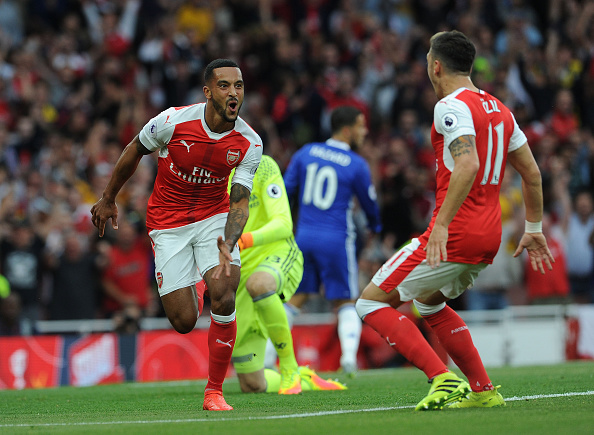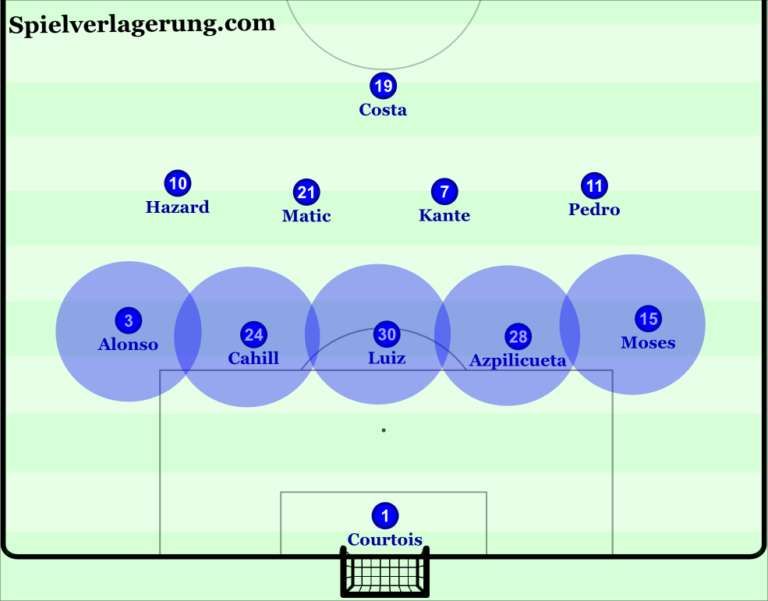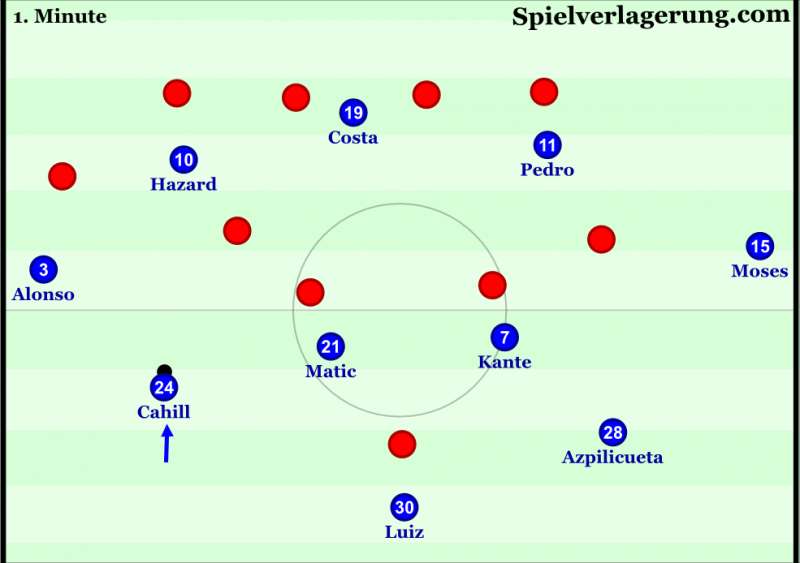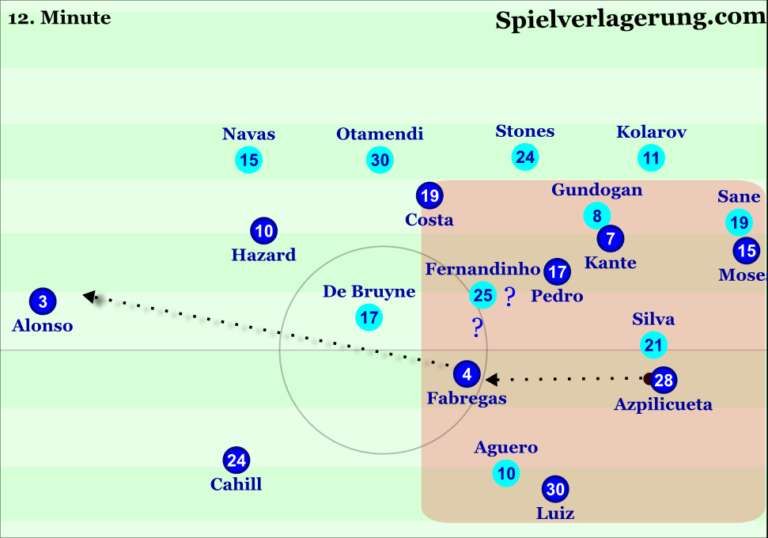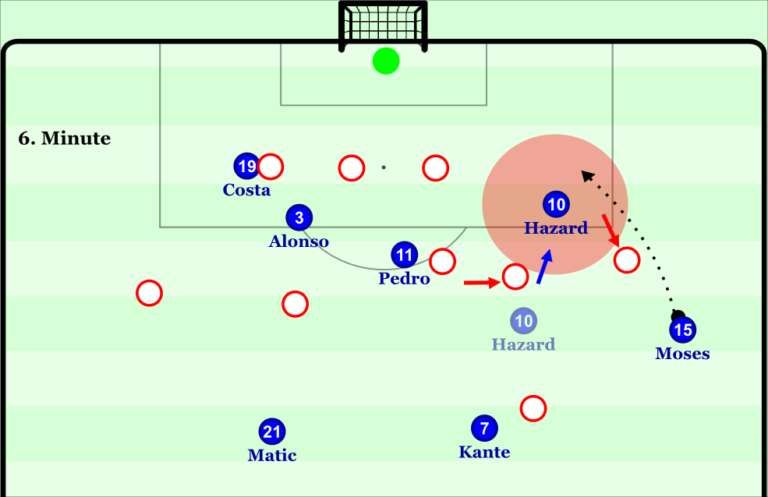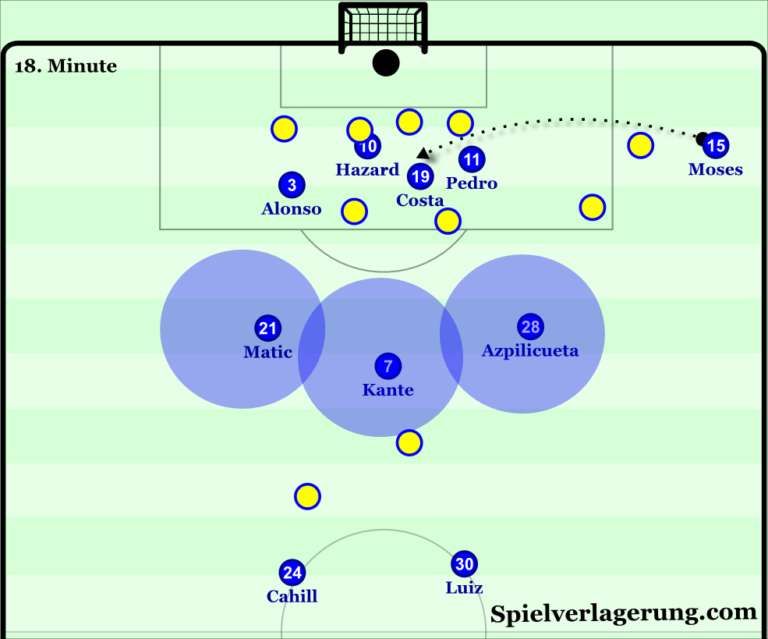
EPL 2016/17: Antonio Conte's 3-4-3 explained
It takes great minds to bring change. It takes even greater minds to shake up the very fabric of traditions and change them. When Antonio Conte first arrived in England as Chelsea manager, not a lot of people knew what he would bring to the club.
In his first press conference, he said, “In Italy, I liked to say the manager is like a tailor. You have to best dress the team.” That statement, as simple and as Italian as it was, defined what Conte would do in the next six months at Chelsea.
While he was at Juventus, an Italian journalist named Alessandro Alciato wrote a small book on Conte’s methods and tactics called, ‘Il Metodo Conte’ or ‘The Conte Method’.
The book is yet to be translated into English, however, a few quotes revealed a fragment of what the Italian was all about. As Alciato suggests, Conte doesn’t like losing at all, “I consider defeat to be a state of virtual death,” Alciato wrote, referring to a phrase Conte often uses. In another section, he cited: “If you don’t run in football, you’re dead.”
The Outlier at Juventus
The stats from his spell at Juventus revealed some astonishing details, something remarkable to say the least – He was an outlier.
- Since 1971-1972, Conte is the Juventus manager with the highest win ratio in Serie A (72.8 percent), winning 83 out 114 league games, losing only seven.
- Conte's Juventus scored in 43 consecutive games (February 2013-March 2014), which is a Serie A all-time record.
- Juventus also recorded an unbeaten run of 49 games in all competitions from May 2011 to October 2012 (with Conte involved in 48 of them) – only AC Milan can boast a longer streak (58 games) in Serie A history.
- He guided the ‘Old Lady’ to a whole league season unbeaten in his first year in charge, as they won the 2011/12 title.
- Conte won the Scudetto with Juventus in 2013-14, picking up 102 points and winning 33 games - both all-time records in a single Serie A campaign.
- He won three consecutive Serie A titles and picked up the manager of the season award – the Panchina d’Oro – in each season, an Italian top-flight record.
Designing a system to suit the players
At Chelsea, Conte has succeeded in designing the team’s system to suit the ability of the players available – Like a tailor cuts a piece of cloth to fit his customer. Unlike a lot of managers who have a set style, system and philosophy and then buy players to suit their system, Conte analysed his squad and created a system to suit their ability with minor additions.
In what was the culmination of a study of his players’ strengths and weaknesses, the 3-4-3 unhinged the door of flexibility, dynamism and adaptation in a football formation. The amalgamation of player roles into this system is so perfect that every individual is playing to the best of his ability. Further, it is giving managers in the Premier League a perpetual headache.
The catalyst
The defeats to Arsenal and Liverpool were the necessary catalysts for change. It was the result of the goals they conceded that Conte realised the flaws of playing a 4-man back line. On numerous occasions, the wingers i.e. Pedro/Willian on the right and Hazard, in particular, on the left, would not track back and lose their markers which resulted in their full-backs being exposed.
This goal which Walcott scored against Chelsea highlighted their winger (Hazard here) not tracking back with his runner(Bellerin) which led to the goal.
Walcott goal - Arsenal vs Chelsea 24th Sept 2016, Emirates. Hazard fails to track Bellerin. 4 at the back an issue. pic.twitter.com/enTJkeTisw
— Gaurav Zen Kicksnan (@gaurav_krishnan) 17 January 2017
A clear lack of pace in Chelsea’s centre-backs was also a glaring issue. Conte needed to reassess and rethink, he needed to make a change.
Apart from not losing, the 47-year-old doesn’t like conceding goals – in each of his Serie A title winning campaigns with Juventus, they had the best defence in the league, conceding fewer than 25 goals in each season.
At Stamford Bridge, meanwhile, under his expert guidance, the Blues have conceded just 15 goals this campaign, which is the second best defensive record in the league. He builds from the back and as the old saying goes, ‘Defences win you titles’.
The result was the 3-4-3.
The 3-4-3 broken down
The 3-4-3 transitions to create a 5-4-1 when Chelsea defend and a 3-2-5 when they attack. In both situations, a stark contrast is the ‘Numerical superiority’ achieved by the formation. The Italians call it “Giochi di Posizione” or as the English know it, simply ‘Positional play’ and numerical superiority is an integral part of it, which, as the name suggests, urges a team to have more players in a situation than the opposition.
Basically, the aim is to create more 2 v 1, 3 v 1 or 3 v 2 situations with and without the ball. The advantages of this are that there is always a free player to pass to or help out while defending.
In the Chelsea back line with the 3-4-3, the most visible change was their positioning without the ball. When the wingers and wing-backs tuck in, it becomes a 5-4-1.
Further, this narrows the spaces and passing options, making the team compact. Also, more often than not, there are more bodies in the box for Chelsea.
In attack, meanwhile, it becomes a 3-2-5 when the full backs push up.
The traditional 4-man defence becomes useless
When Chelsea overload at speed on the break or when they build up with the ball, the 4-man defences of the Premier League don’t stand a chance of defending against them in such situations. This is mainly because when Alonso and Moses push up, and Hazard and Pedro/Willian make runs inside the two centre backs, Diego Costa is a free man, leading to a 3 v 2 in the centre.
Consequently, the two-man central defence is in a fix whether to track Costa or the runs from the wingers, while the full-backs can either cross or play it in behind the defence.
The other option is if the wingers go wide, which creates a 2 v 1 on the full-back, with the centre-backs marking Costa.
In every situation, Chelsea have numerical superiority when Premier League teams play four at the back. Then there is also the option to play it in the centre to either Matic or Kante and them, in turn, finding players in space. The sheer numbers create better goal scoring opportunities for the Blues.
Also read: EPL 2016/17- Jamie Carragher analyses how to beat Chelsea's 3-4-3 system
This is probably why more and more teams are choosing to match Chelsea man for man with identical formations. However, Tottenham are the only team to have beaten them by doing so. This is perhaps due to the lack of quality and lack of practice in such a system for those clubs. Most of the managers in the Premier League switched to a back three specifically before their games against Chelsea while playing their regular preferred formation for all their other games.
A few moves by Chelsea this season
A move that Chelsea have performed quite often is this – Matic plays a ball to Hazard who drags 3 players to him and then releases Alonso.
Matic to Hazard to release Alonso pic.twitter.com/OKHZmGuWlw
— Gaurav Zen Kicksnan (@gaurav_krishnan) 17 January 2017
Another standard play is the ball up to Costa which releases either Hazard or Alonso.
The ball to Diego Costa releasing Hazard and Alonso pic.twitter.com/pETpJ4FzJt
— Gaurav Zen Kicksnan (@gaurav_krishnan) 17 January 2017
When they play out of defence the two players who pressure the ball also cannot determine who to run to as there is always an option to switch for Chelsea as illustrated here:
Chelsea switching play options pic.twitter.com/4CDLJmkEoO
— Gaurav Zen Kicksnan (@gaurav_krishnan) 17 January 2017
Also, the Stamford Bridge side sometimes deliberately overload one side of the pitch creating huge spaces on the opposite side.
Eden Hazard has freedom again
As countless commentators have stated during games, “You have to get your best players on the ball.” Eden Hazard is perhaps Chelsea’s best and most creative player with the ball at his feet. With less defensive burden for the Belgian, he has been given license to roam and has enjoyed a rejuvenated season this time around.
He stays up, he combines with Costa and makes all kinds of runs into channels and space while also dropping deep to create at times. He’s been given the freedom to roam.
As illustrated here, Hazard runs into space, where he is deadly.
And he also makes more runs into the box under Conte which is something he did not do as much under previous managers. The picture below highlights that as well as how Chelsea have three players to recycle possession for second balls that come out of the box after an overload, which means periods of relentless pressure on the opposition.
The only few mistakes Chelsea made, the midfield in particular, was failing to close down Christian Eriksen quick enough in the build up for both the goals scored by Dele Alli when they lost to Tottenham. Mistakes that Conte would surely have been livid about, but N’Golo Kante and Nemanja Matic are human in the end.
Conte didn’t just adapt, he changed the game entirely
Conte came to England without any experience in English football and in six months has broken a tradition used by managers since the Premier League’s inception. He didn’t just adapt to life in the Premier League, he changed it.
In football, Conte is a unique thinker and has proved in a short space of time that he can turn the ingrained and default systems on their head with a few tweaks. He is a scientist working on an elaborate theory, meticulous and calculated in every move. Great minds will always find their own unique way out of a problem and Conte has done exactly that.
Managers are following his exact same formula now in the Premier League with Tottenham and Liverpool both embracing a back-three. Conte doesn’t imitate, he sets the trend.
What did Conte say to turn this team around?
There is an interesting story about Conte’s speech when he became Juventus manager. As Andrea Pirlo recalled in his biography, ‘I think therefore I play’, "He needed only one speech, with many simple words, to conquer both me and Juventus.
“He had fire running through his veins and he moved like a viper. 'This squad, dear boys, is coming off two consecutive seventh-place finishes. It's crazy. It's shocking. I am not here for this, so it's time to stop being so crap.'... When Conte speaks, his words assault you. They crash through the doors of your mind. I've lost count of the number of times I've said: 'Hell, Conte said something really spot-on again today.'”
Also read: EPL 2016-17: Antonio Conte reveals Chelsea’s new 3-4-3 was his plan D initially
Maybe he said something similar to the Chelsea players when he took over. This was, for the most part, the same team that finished 10th last season. This season they just came off a 13-game win streak(the joint highest in Premier League history) and currently lead the table, seven points clear at the top.
That’s a turnaround and a half if you ask me.
That’s what management is all about. Not splurging recklessly on players to suit your system and then expecting them to play in a stringent way, but instead, like a careful tailor, using the material you’ve got to make the best suit possible. Of course, you can import the threads, after all, it’s what keeps the suit together.
At the moment Chelsea’s system and their play to the eye is, in a word, – “Bellissimo” as the Italians would say, which means “beautiful”.
All that’s left now is for Chelsea to finish the job and lift the Premier League trophy in May and with their fixture list, it should be done.

